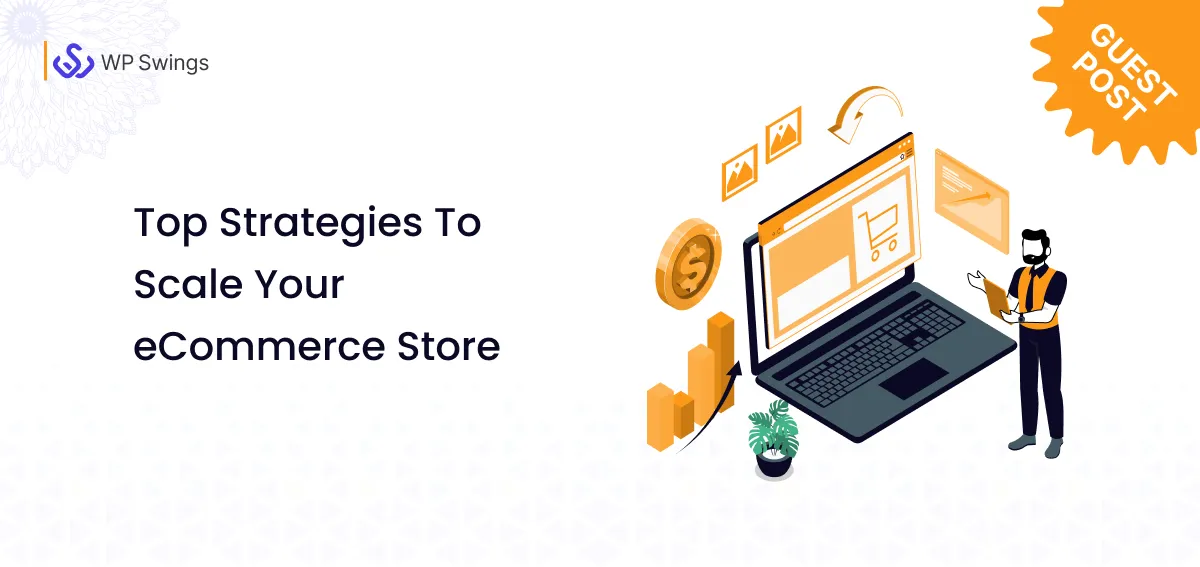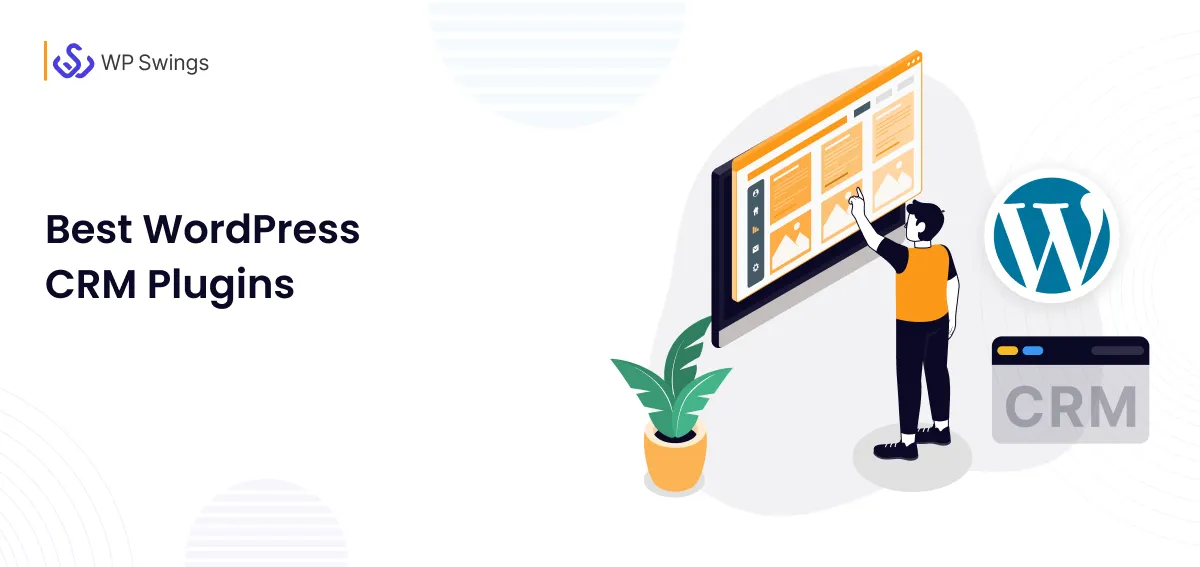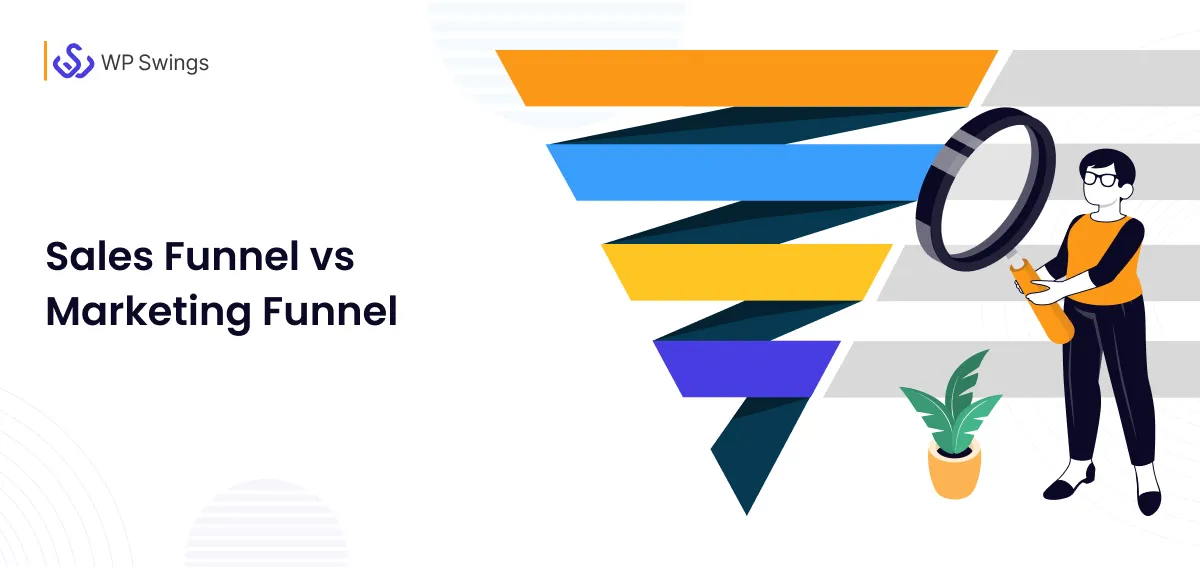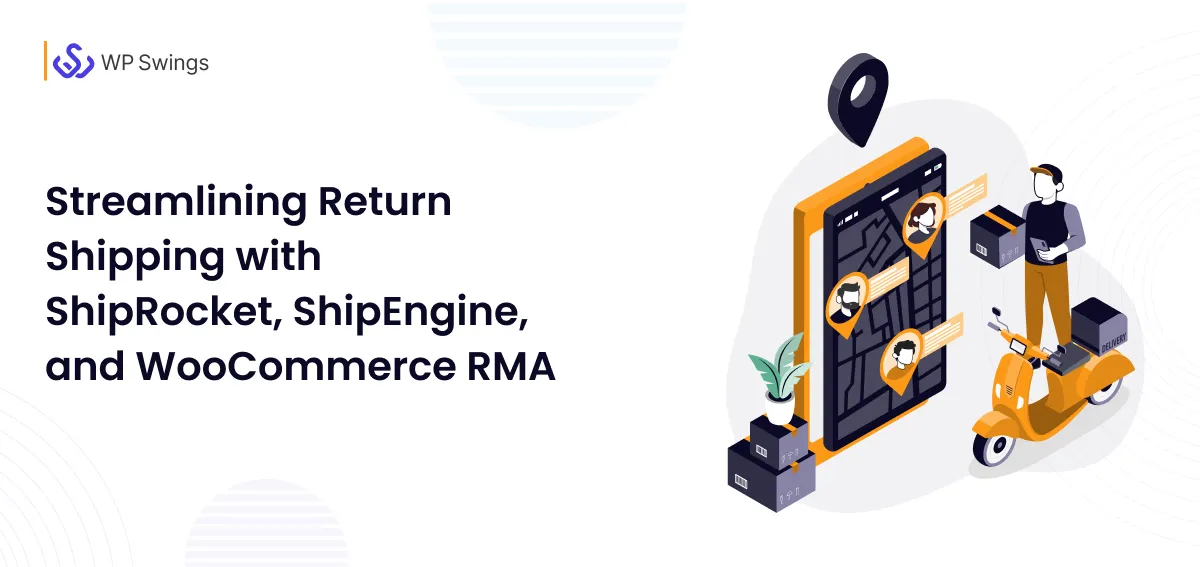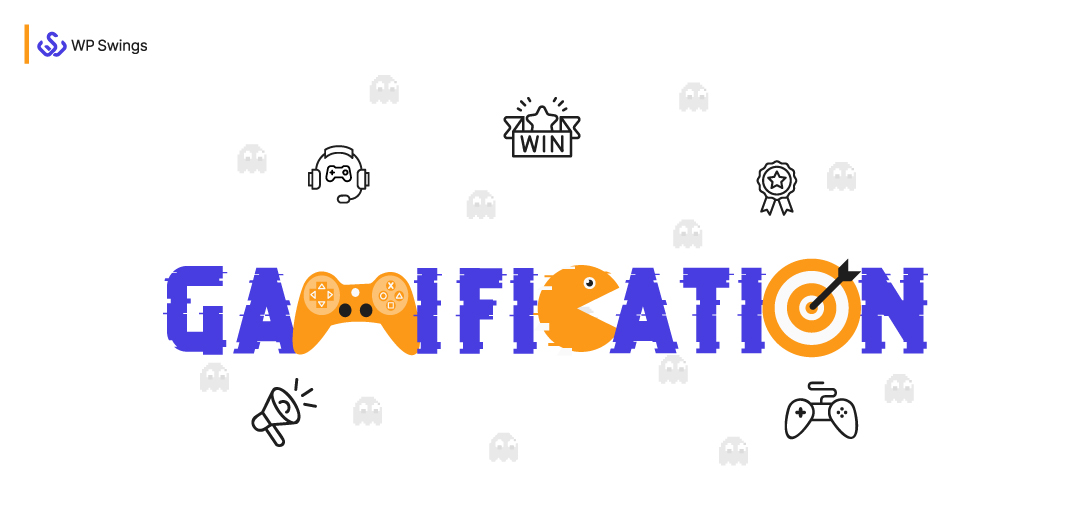
Gamification Marketing is the application of game-like elements for non-gaming activities. Essentially, it is the process of making otherwise boring activities fun.
It works effectively because of our psychological tendency to play games. We are naturally inclined to learn, compete, achieve, and express ourselves in a game-like setup. People are more willing to participate in activities containing gamified elements because they feel accomplished after completing them.
Games and gamified elements are not exactly similar, but both are applied extensively in marketing, sales, education, web development, health, finance, and more. The successful application of gamification for marketing improves user engagement, productivity, learning, retention, user experience, user interface, health, and more.
This article will outline the use of gamification in marketing, or gamification marketing. Also, I will discuss the history of gamification and different ways to gamify your WooCommerce store.
In This Blog, You Will Find Out About…
What Is Gamification Marketing?
Gamification marketing involves integrating game mechanics into your marketing activities to enhance user engagement and retention, and encourage users to purchase your products and services. The idea of marketing gamification is rooted in the fact that playing digital and physical games is a rewarding experience. It releases the feel-good neurotransmitters known as dopamine.
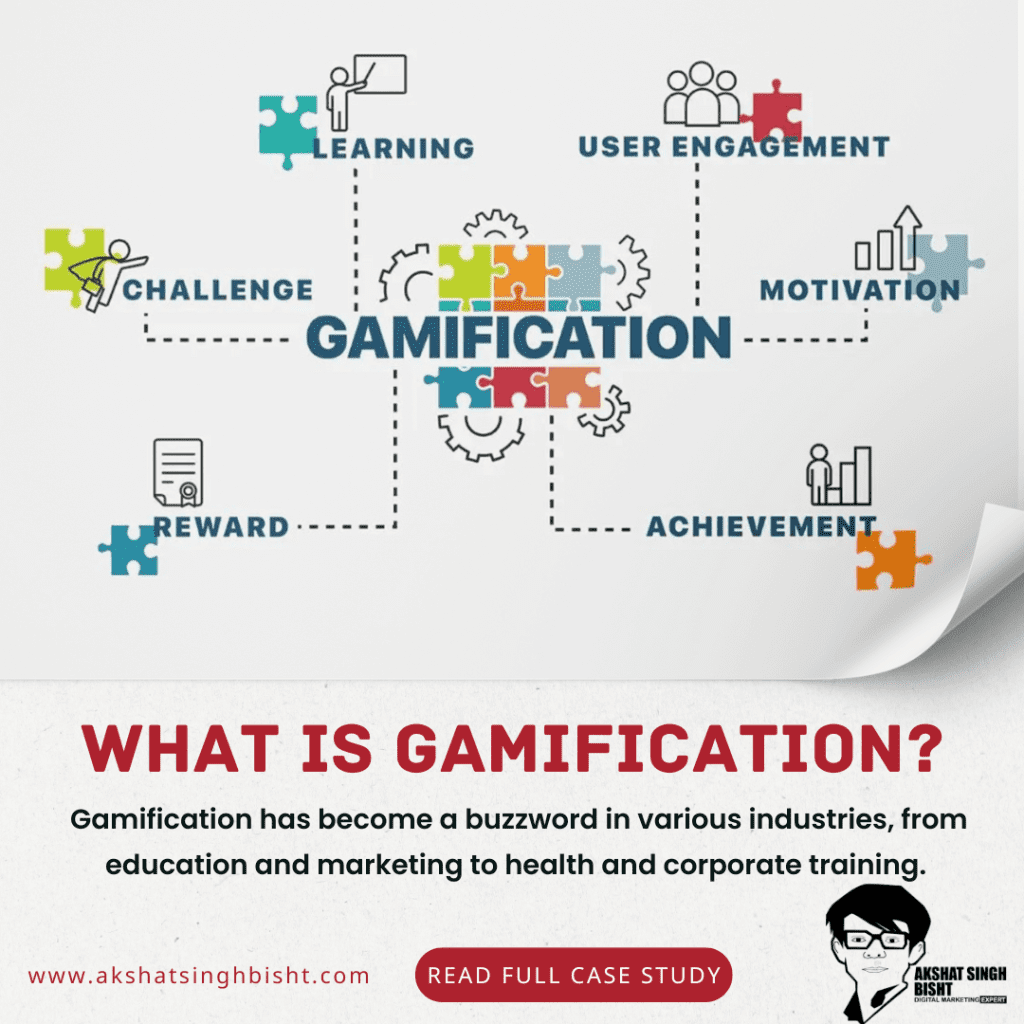
So, gamification marketing is reward-based marketing. It appeals to our natural inclination to compete in activities to earn rewards, achieve status, and overcome challenges. Gamification is not limited to marketing. The major fields like education, LinkedIn recruiting, health, crowdsourcing, military tactical training, technology, etc., also use gamification techniques.
Key Components Of Gamification Marketing
The amalgamation of gamification and marketing opens all doors for creativity. Gamification marketing campaigns use game-like elements and even actual playable games (both digital and physical) to sell products and services.
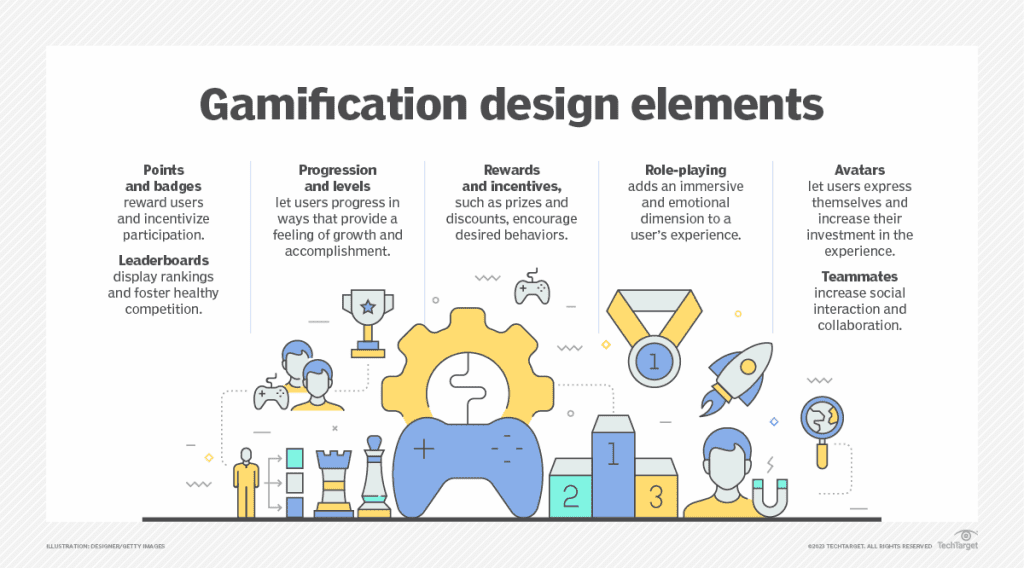
Here is a list of popular game elements to add to your online business.
- The Progress Bar
- Reward Points
- Badges
- Contest
- Performance Graph
This list contains the most-used gamification for marketing concepts. However, the application of gamification marketing is much more creative and fun.
As I said earlier, with gamification, the possibilities are endless. Let’s dive into it.
Why Is Gamification Marketing Effective?
Businesses with gamified loyalty programs such as virtual badges, points, or exclusive perks witness a 22% increase in customer retention. These initiatives lead to repeat purchases, driving customer loyalty.
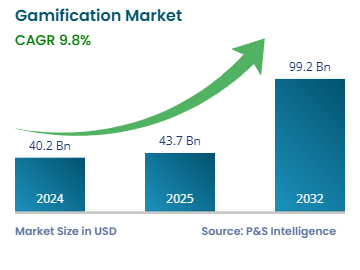
As you can see, several game mechanics were already in use, even before the term gamification was coined. So, adapting gamified elements and using them for non-gaming contexts is a win-win situation for all.
Other factors to consider –
- Improves Customer Engagement: Following the ongoing market trend, it is difficult to capture the customer’s interest for a longer period. Gamification marketing helps marketers to stand out from the crowd and makes their brands memorable.
- Enhances Conversion Rates: According to the statistical data, introducing gamification marketing increases conversion rates by 23.8%. This marketing technique is effective because it drives a sense of urgency and excitement. How? Especially when points, rewards, or badges tend to expire. This pushes the customers to make a purchase.
- Helps With Customer Loyalty: Shoppers today do not want access to quality products, but also want the brand to offer an exquisite shopping experience. By incorporating gamification marketing, you can make the customers return or even become your brand’s loyal ambassadors.
- Gamification for Marketing Funnel: By incorporating game mechanics into your WooCommerce during the awareness stage help your customers become more aware. Engaging users with games and challenges makes your customers curious about your brand and keeps them hooked. They become willing to subscribe to your newsletters; all of a sudden, you converted a visitor into a customer, and it’s all because of gamified marketing.
Bottom Line: Gamification and Marketing go hand in hand.
7 Gamification Marketing Strategies With Examples [2025]
Gamification is applied by both introducing gamified elements into marketing and using real games as a marketing tool.
Sometimes, established games feature real-life elements as a part of a gamification marketing campaign. And sometimes, digital games are created to promote physical products. The list goes on. Trust me when I say that gamification marketing is a series of creative anomalies.
So, let’s look at these creative anomalies and understand effective gamification strategies.
1. Gamify Tasks With The Progress Bar
The progress bar is a graphical element that allows users to track their progress in achieving predefined targets. Many websites, online stores, and social media giants apply this gamification marketing idea to their platforms.
The progress bar works on the following psychological factors:
- The need for competence
- The desire to achieve and win
- Compulsions to complete
These three factors reflect the effectiveness of this simple gamification design. It appeals to our instincts and motivates us to engage with the system. The profile strength bar is the most commonly used form of the progress bar.
For example, LinkedIn is an American business and employment-oriented online service that operates via websites and mobile apps. It uses a gamified profile strength bar to encourage users to set up their profiles.
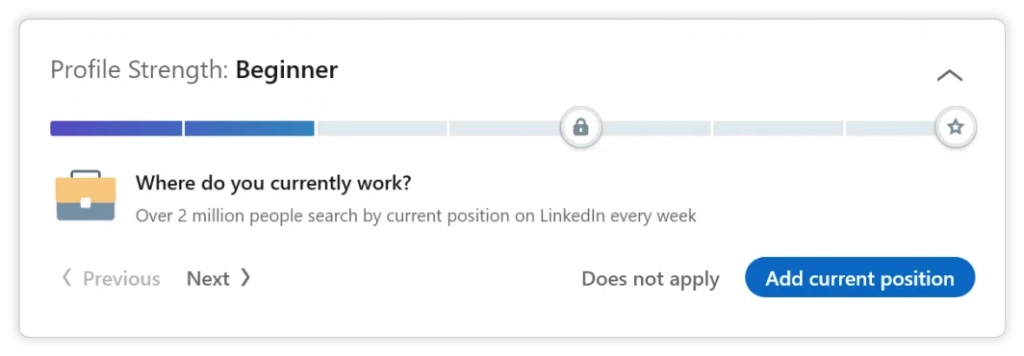
Source: LinkedIn
It has two profile stages, INTERMEDIATE and ALL-STAR, which further reinforce the desire for achievement. Meanwhile, LinkedIn also promotes premium profile plans. So, users interacting with this gamified setup feel encouraged to complete their profile & purchase one of the premium profile plans.
An excellent gamification marketing strategy.
2. Gamification Reward Points
Have you ever wondered why Mario keeps bumping his head into the blocks?
He does so to earn rewards.
If you have played the classic game even once, you know that the blocks have some pretty creative rewards. That is one of the reasons why the Super Mario game became so popular. Anyway, out of the virtual plane, things aren’t much different either in the real world.
People are more likely to complete a task if they are to receive a reward for it. And the rewarding task doesn’t have to be as concussive as hitting a block with your head. Prominent online stores offer reward points or coins to their customers for performing various gamified tasks such as sign-ups, product purchases, referrals, social shares, etc. This sets up a basic gamification rule: The greater the engagement, the bigger the reward.
The Indian eCommerce giant Flipkart is the perfect gamification marketing example. It allows its users to earn SuperCoins on product purchases. COD payments are also accepted in the gamified reward program.
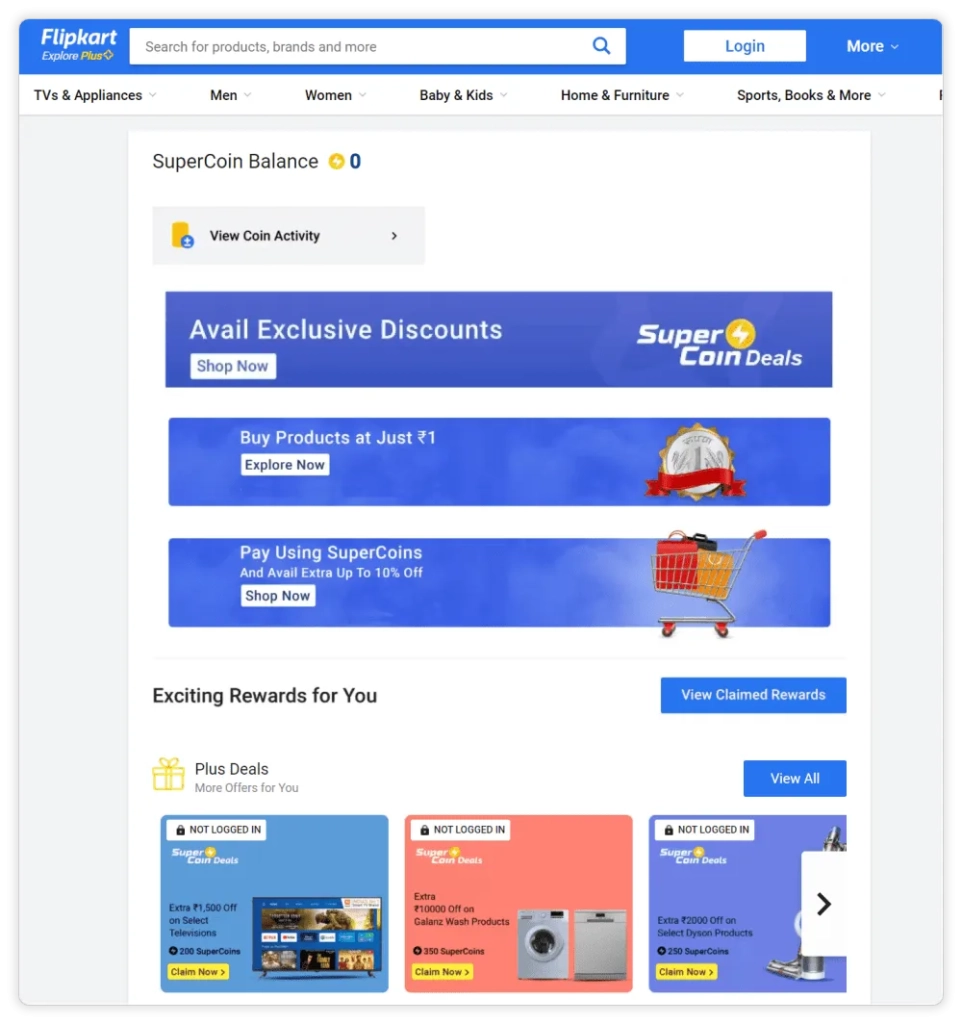
Source: Flipkart
Flipkart’s customer loyalty program encourages customers to purchase more products to earn SuperCoins and pushes them to become plus members.
It’s a simple yet effective gamification marketing strategy to earn customer loyalty, increase brand awareness, and boost sales. But a gamified reward system doesn’t necessarily have to be point-based. You can also set up a referral program for your online business and offer discount coupons and gift cards as rewards.
4. Contests: The Oldest Gamification Marketing Idea
Organizing contests is an age-old gamification marketing strategy. The most basic being the lottery contests and lucky draws. It works so well because the stakes are low, and the rewards are high. You can easily replicate and implement these game elements into your online store.
It is also known as Contest Marketing. It uses contests, giveaways, lotteries, or lucky draws to gamify your business, get quality leads, and create brand awareness.
The majority of these contests are free to participate in; thus, they attract numerous customers to your online store.
For example, the M&M Eye-Spy Pretzel campaign, the company ran this contest by posting an image on their social media platforms, users were challenged to find a pretzel hidden among a sea of M&M’s candies in an image posted online.
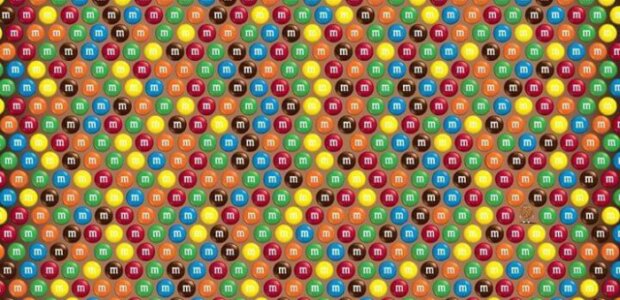
This was a very simple yet unique gamification marketing technique that not only went viral but also actively promoted the newly launched pretzel-flavored M&Ms.
Best Social Media Branding Tips
4. Advergames Or Gamified Advertisements
Introducing game elements into your online store or website is an easy job. But applying gamification for brick-and-mortar stores is tough.
However, many business owners have found a way around it. Instead of adapting game elements into their business, they created actual games for their products. Such games are called Advergames. The sole purpose of an advergame is to promote a brand, product, or service.
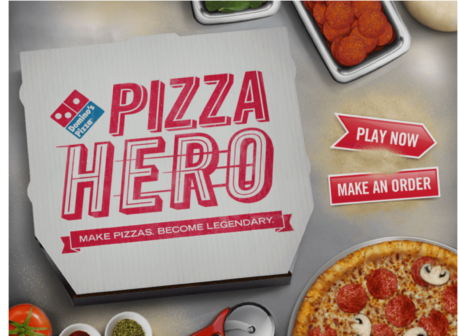
Domino’s Pizza also designed a gaming app called Domino’s Pizza Hero and increased sales revenue by 30% by letting customers create their pizza with this app.
Advergames always create buzz for brands and work better than traditional advertising. People, especially teens, get easily hooked on these games and ultimately want to try the actual product.
5. Brandification
Brandification is applying or introducing real-world elements into games for marketing and promotion. This gamification marketing method focuses on in-game advertisements.
For example, Counter-Strike, one of the most popular multiplayer first-person shooter games, lets advertisers promote movie posters on the walls within the game. It is one of the first games to promote in-game advertisements.
Next up, we have Tesla, an American electric vehicle and clean energy company. Tesla introduced its cars Purple Model 3 and Model X in the ‘Game Of Peace’ — China’s version of PUBG.
Tesla introduced its cars Purple Model 3 and Model X, in the ‘Game Of Peace’ — China’s version of PUBG.
6. Gamified Popup
Gamified pop-ups are playable games that pop up while browsing a website. It utilizes actual games to increase engagement and user retention.
Two psychological factors are at play here. (pun intended)
- Element of Surprise: Nobody expects a game to pop up while shopping or browsing. Gamified popups create a strong enough impression to hold the users’ attention.
- Fear of Missing Out: People don’t want to miss out on the free stuff. The Gamified popups offer a reward that players can receive only after winning the game.
That’s why eCommerce gamification strategies include gamified popups. It always works.
For example, Amazon used a ‘spin and win’ wheel on its eCommerce store to increase customer engagement. It offered various lucrative rewards that customers couldn’t resist. But only registered customers could spin the wheel and try their luck. So, people asked their family members or friends to register on Amazon to try the popup game to increase their chances of winning.
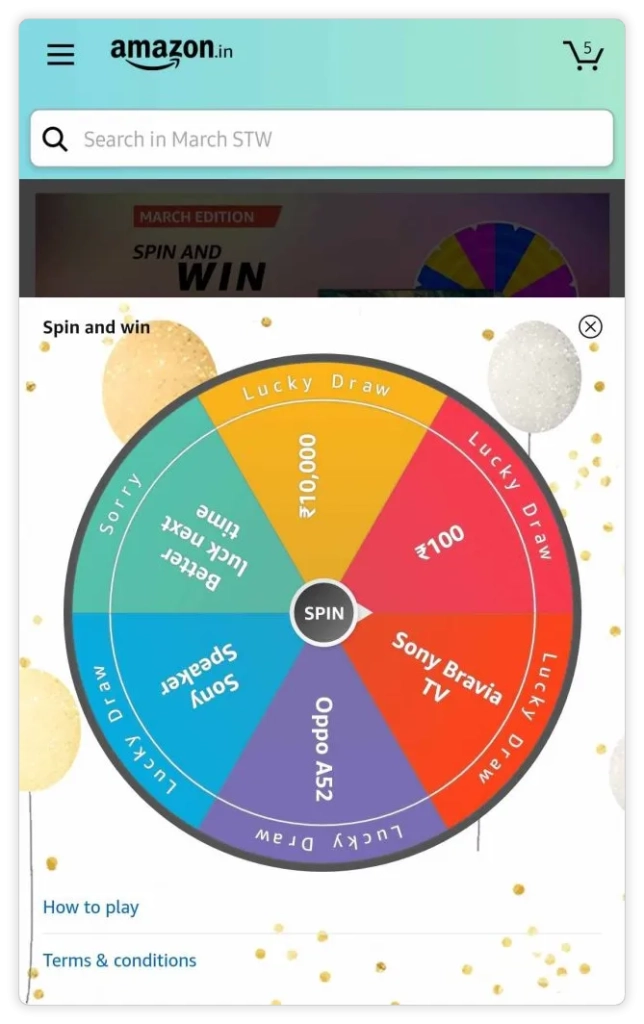
Source: Amazon
7. AI-Integration In Gamification Marketing
Incorporation of Artificial Intelligence (AI) in gamification marketing helps marketers to revolutionize marketing in 2025. In gamification, brands use game mechanics – such as points, badges, levels, or challenges — to engage customers.
When AI is added, it can analyze customer behavior, preferences, and engagement patterns in real time. According to a 2024 study by Gartner, 80% of marketers who deployed AI-powered personalization reported a 20% increase in engagement metrics.
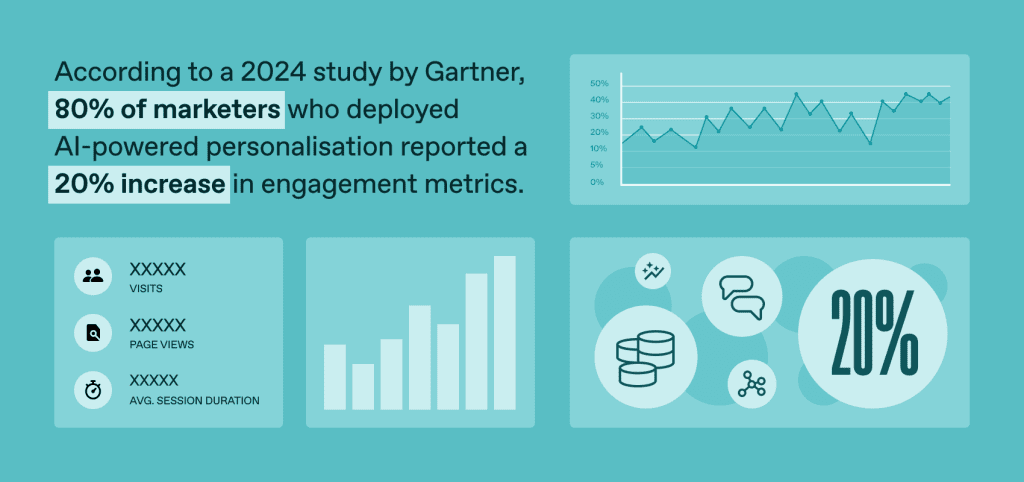
This allows brands to customize the overall game experiences to each user, for example, by adjusting difficulty levels, offering personalized rewards, predicting what incentives will motivate a user, or recommending the next challenge.
Gamification Marketing With WP Swings
Here is a fact for you, dear readers.
You can customize and add gamified elements to your WooCommerce store and take your business to the next level.
WooCommerce offers limitless customization, which proves helpful while adding gamified elements to your online store. Plus, there are thousands of gamification plugins on WordPress to help you implement the best game elements.
So, how do WP Swings come into all of this?
Well, we have over 50+ WordPress/WooCommerce extensions, offer several custom eCommerce solutions as per client requirements, have maintained an impressive WordPress.org profile, and contribute readily to the open-source community.
Bottom line: We have the expertise to gamify your WooCommerce store.
Here is the list of our plugins that will gamify your online store.
1. Gamification Marketing With Points and Rewards for WooCommerce
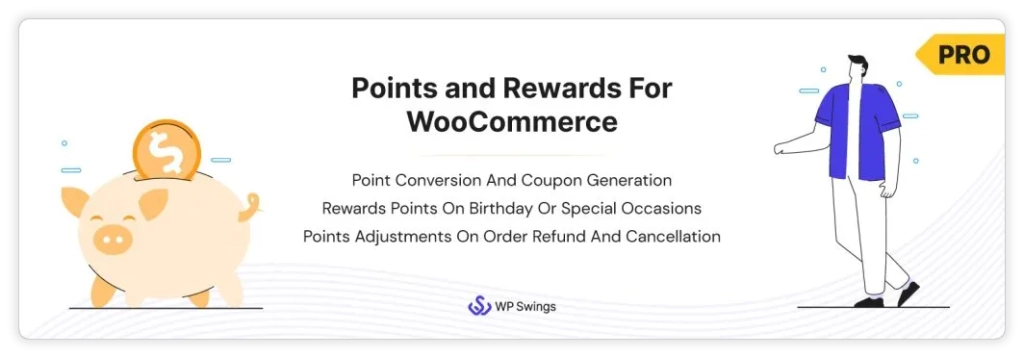
A gaming program helps merchants add the element of fun. It also makes the mundane task of purchasing on the website interesting for the customers. Several companies have actively started incorporating this into their existing loyalty programs.
WooCommerce points and rewards help you implement this element effectively in loyalty programs. Let’s unravel together…
The user can also utilize the functionality of “User Badges & Levels”, to motivate your customers to earn reward points through various activities by awarding unique user badges. These badges represent different levels of achievement. This further creates a sense of accomplishment amongst your customers, and they are encouraged to buy from your store.
Key Features Of The Points & Rewards Plugin –
- Gamification
- User Level & Badges
- Earn Referral Points
- Per Currency Points
- Points Log Report
- Build Membership
- Assign Product Points
- Rewards On Birthday
Want To Start A Loyalty Program For Your eCommerce Store?
Just like the prominent online store, you can also implement a gamified reward-based system and increase the brand loyalty, customer retention, and conversion rate of your online store.
2. Coupon Referral Program For WooCommerce
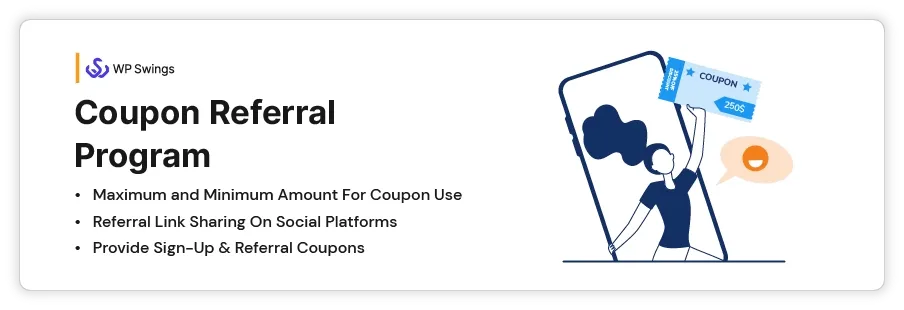
Referral Marketing is a marketing tactic in which online stores utilize the existing customer base to promote their products and services to grow their business and add new customers.
Its effectiveness lies in the fact that people trust the recommendations of their family and friends over most forms of advertisement.
In this type of gamification marketing, the referrers earn discount coupons as rewards for referring new customers to your online store. It is essentially a reward-based loyalty program. You can implement a coupon referral program on your WooCommerce store with our plugin.
Are your website’s offerings, i.e., coupons, not utilized in the way you desired?
It has several amazing features, such as
- Reward for referring new customers
- Sign up for discount coupons for all customers
- Referral coupon customization
- Detailed coupon report
- The shortcode for the referral button display
- Reward points instead of coupons
And this list goes on. Read the Referral Plugin for WooCommerce to learn more about this plugin.
3. Gamify Your Payment Process With Wallet System for WooCommerce Pro
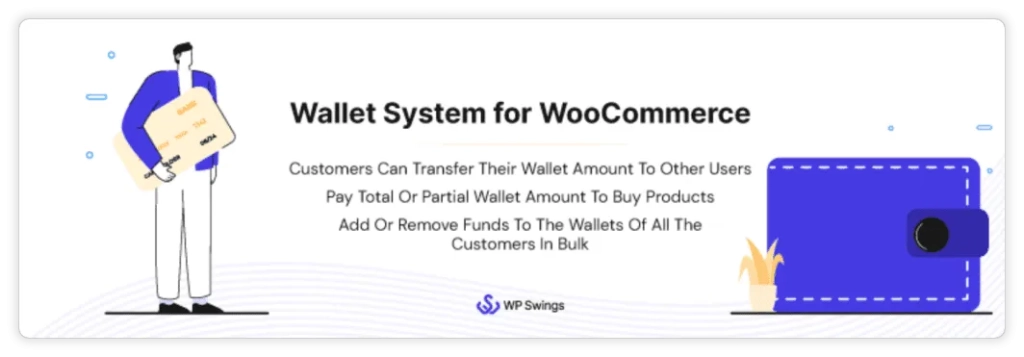
The Wallet System for WooCommerce plugin creates a digital wallet system in your store. It allows registered users to make eCommerce transactions using their wallet balance.
Only registered customers use the wallet system and add money to their wallets through the available payment methods. As the admin, you can also see the list of wallet transactions, bulk credit or debit, etc.
With this gamification plugin, you can offer cashback rewards to your customers, Cart-wise or Category-wise. Moreover, customers can earn wallet credit on Daily User Visits, Commenting on Positive Reviews, and Signing up.
It’s a faster alternative to conventional payment methods with popular gamified elements that positively reward favorable actions and encourage shopping behavior.
Features Of The Wallet System for WooCommerce
- View wallet transactions (credit/debit).
- Transfer the wallet amount to other users.
- Earn wallet cashback on purchases.
- Auto-Complete wallet recharge.
- Make withdrawal requests to merchants.
- Works as a complete and partial payment method.
- Restrict wallet features for users individually or in bulk.
- Negative Wallet support for users, allowing them to continue shopping even if they don’t have enough funds in their wallet.
- Compatibility with
- Multi-Vendor Marketplace Solution for WooCommerce
- WPML
- WordPress Multisite Network
- Subscription for WooCommerce
- RMA for WooCommerce
- Gift Card For WooCommerce
And so much more. Digital Wallet Plugin to read about the WooCommerce Wallet System in detail.
Are You Excited to Gamify Your Payment Method?
These were the three plugins by WP Swings that will gamify your WooCommerce store. These gamification plugins will work wonders for your business, but if you need further gamification, contact us.
On A Final Note
Engagement is the key to conversion. Gamification marketing is the most scientific marketing method to increase user engagement and retention. The top businesses of our time are using gamification.
In this article, I’ve discussed what gamification is, its profound history, and how it is applied in marketing. I’ve also shown you the different applications of gamification marketing and explained how to gamify your online store. Apply these gamification marketing techniques to boost user engagement, productivity, retention, UI & UX, and more.
And hey, check out our other articles if you want to learn more about the best eCommerce practices.

